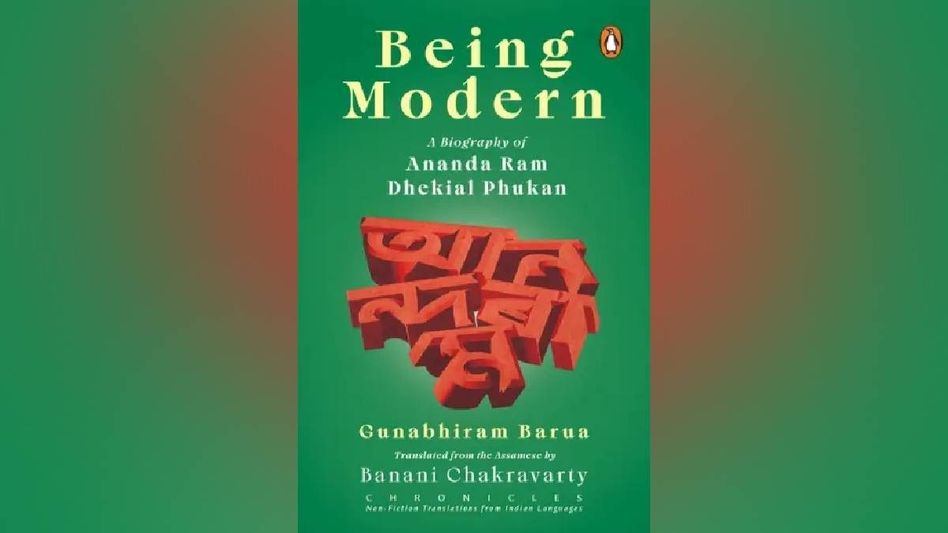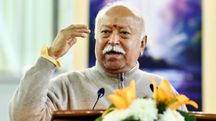This book profiles the visionary who shaped Assam's identity
The biography of Ananda Ram Dhekial Phookan opens with a striking image from a century and a half ago - a young Assamese boy returning from Calcutta, leaving his studies incomplete to root himself in his homeland.

“The progress of the Assamese language owes much to Ananda Ram. He reasoned with everyone who supported or opposed the language issue and remained in constant touch with missionaries, whether in person or by correspondence, during their efforts to promote the language. Ananda Ram will always be remembered for his contributions, irrespective of the rise or decline of the Assamese language.”
The biography of Ananda Ram Dhekial Phookan opens with a striking image from a century and a half ago - a young Assamese boy returning from Calcutta, leaving his studies incomplete to root himself in his homeland. This evocative beginning forms the narrative thread of 'Being Modern', drawing readers into the journey of a man whose vision helped shape cultural identity in a rapidly changing world.
For those unfamiliar with him, the book immediately sparks curiosity. In his short-lived life - not even 30 years - Ananda Ram carved out a legacy that continues to echo through Assam's history.
From the first chapter to the last, 'Being Modern' offers a detailed account of his brief yet extraordinary life. The final pages leave a lingering ache - a reminder of how much more he might have transformed had time been on his side.
This biography is a treasure trove for anyone new to Assam’s culture and history. It shines a light on a pioneer who worked tirelessly to bridge the gap between local traditions and Western thought, while offering rare insights into the East India Company’s final occupation of Assam.
More than just a biography, the book doubles as a historical chronicle of 19th-century Assam: its evolution, its identity, and its layered transitions. The prologue is particularly fascinating, unveiling snapshots of history that shaped the state’s foundations, including British settlements in Guwahati and Nagaon, and various other parts of Assam.
Translator Banani Chakravarty deepens the narrative by including details about the original author, Gunabhiram Barua, especially his decision to marry a widow, a bold and progressive step that stirred social change.
Little is widely known about Assam’s colonial landscape, and this book attempts to fill that gap. The narration is vivid enough to make the scenes unfold before your eyes. It also shows how deeply faith, rituals, and education were interwoven into everyday life. Interestingly, British initiatives in the region also funded and encouraged education, something the book captures with nuance.
Even though the story belongs to another era, its themes feel familiar - controversy, gossip, scrutiny, and domestic tensions - echoing patterns that exist in every society, even today.
Ananda Ram’s personality emerges as layered and compelling. He was educated, open-minded, deeply religious, and progressive for his time. He educated his own wife, championed female education beyond his family, and balanced modernity with tradition. His association with the British was pragmatic, rooted in intellect and mutual respect.
Also Read: 'The Last Free Naga' reveals tales of identity, conflict and enduring resilience
“At the time, character, lineage and general efficiency were the only criteria for employment.” This line captures the administrative reality of the time, not just in Assam but across colonial India. It sets the stage for understanding the environment in which Ananda Ram built his legacy through intellect, integrity, and cultural commitment.
The book’s age and its translated form do bring challenges. Written decades ago, it carries a density that modern biographies often do not. British colonial policies, local traditions, administrative records, and personal histories intermingle, sometimes creating a sense of overload. Names, dates, and details appear in abundance, occasionally requiring the reader to pause and retrace. But this complexity is part of its charm. The fact that such a work exists, and is now translated, is in itself a privilege for Assamese literature and history.
One of the most compelling sections revolves around 'Orunodoi', the monthly journal launched in 1846 from Sivasagar. Through its pages, readers witness a cultural revolution that reached the remotest corners of Assam. Ananda Ram’s role in shaping its legacy through his writings reveals another side of his influence.
The book also explains why many consider him the father of Assamese literature. At a time when Bengali had been declared the official language of the region, he emerged as a cultural force, working to revive and sustain the Assamese language. His choices were guided by principle, not profit. He turned down lucrative offers, opting instead for merit-based positions that matched his values.
His influence extended far beyond literature. Trusted by royal families, he mediated disputes, standardized taxes and duties, and was frequently recommended for top administrative roles without needing to prove himself repeatedly. His reputation spoke for him.
What stands out most is his humility. The book makes it evident that Ananda Ram never sought attention, benefits, or special treatment from the powerful. He remained grounded - his feet firmly on the ground - and never carried the air of someone aware of his own brilliance. He didn’t ask for greatness; he earned it. And that is why Assam remembers him with such gratitude and reverence.
Copyright©2025 Living Media India Limited. For reprint rights: Syndications Today









